
Startup Submission 02: Static UI Mockup
Introduction
UCombinator is currently reviewing your product and feature pitches, and will be in contact with you soon to let you know if your product and features are accepted. Until then, consider your product and features provisionally accepted.
Now, UCombinator wants to see what your product will look like. It’s time to take the abstract idea you talked about in your product pitch and turn it into HTML and CSS mockups using Bootstrap.
In addition, UCombinator wants to see a mockup of each honors student’s proposed feature (note: this option only exists during semesters when an honors section is offered). Honors students will need to participate in the main product mockup and produce a mockup of their proposed feature.
We detail everything below.
Your Product’s Git Repository
UCombinator has furnished your startup with a snazzy Git repository equipped with modern build support. You will use this repository to develop the frontend of your application. Below, we describe how to use it.
Getting and Preparing the Git Repository
Each startup team will maintain their own git repository on github. To begin, one team member must fork the team project client template github repository into their own github account as a public repository. After they have cloned the client template project that team member must provide access to the repository by inviting collaborators. Make sure you give each collaborator write access to the forked repository. Each collaborator will be sent an email to accept the invitation to collaborate. After a collaborator accepts the invitation they can then clone the git repository as usual.
Use Git to clone your startup’s repository. Then, cd into the
repository, and type npm install. This command will begin a one-time
setup process that pulls in the tools and libraries that our build
scripts depend on. When we eventually cover JavaScript, you will
likely use NPM to manage your product’s dependencies on external
libraries.
Note: If you ever need to clone your repository again, remember to
run npm install in the new repository clone.
After the command completes, you’ll notice a new folder called
node_modules in the repository. This folder contains all of the
dependencies that npm just installed. Don’t mess with these
files. Also, do not add this folder to Git.
Running a Web Server
Run npm run serve within the Git repository to run a webserver at
http://localhost:8080/. Like with Workshop 3-5, this webserver will
remain open as long as you keep the terminal open.
Later on, as you add JavaScript to your project, this same command will handle re-building your application as you change it while simultaneously running the web server.
Git Repository Files
.gitignore: Entries in this file are ignored by Git. We’ve added entries for automatically generated folders/files that you do not want to add to your repository, such asnode_modules..eslintrc: We’ll cover this when you add JavaScript to your project. For now, leave this file alone.webpack.config.js: This is a webpack configuration script, which tellsnpm run serve(andnpm run build) how to build your project and serve it up over HTTP. You should not need to touch this script.app/: This is where you will put the JavaScript/React code for your application. You won’t need to touch this folder just yet.build/: This is where you put the HTML, CSS, images, web fonts, and other assets for your application. We’ve pre-populated this folder with a “Hello World”index.html, and Bootstrap dependencies.- When you eventually add JavaScript to your application, webpack
will magically bundle it into
build/js/app.js. Thebuild/jsfolder currently contains Bootstrap’s JavaScript files.
- When you eventually add JavaScript to your application, webpack
will magically bundle it into
package.json: Contains a list of NPM dependencies that you installed withnpm install, and the logic behind thenpm run serve/npm run buildcommands. Do not mess with this file. The graders depend on thenpm runcommands working properly.
You will add your mockups in the build/ folder as separate HTML
files.
Collaborating Using Git
Your startup is sharing a single Git repository, and is going to need to figure out an effective Git workflow. Communication is really important in a team.
Some pro tips:
- Figure out an effective way to assign tasks to startup founders.
- Your GitHub repository comes with a nice issue tracker, which you may find useful for organizing tasks. You can even reference issue numbers in Git commit messages (e.g. “Makes further progress on #12”).
- Talk to one another before renaming files or making huge changes.
- Don’t be the person who changes every file in a single commit just before the deadline, unless you verified that it’s OK with your team. :)
- Get comfortable with merge conflicts.
- Even the most organized teams will encounter merge conflicts. Everyone in your team has had to handle one in a workshop setting; the merge conflicts you’ll encounter on your project are no harder than that.
- Did you just create a new file? Remember to
git addit!- Git needs to know about any new files you’ve created. It’s easy to forget to add a new file. If it’s not in Git, we cannot grade it!
Product Mockups
UCombinator wants to see static (non-interactive) UI mockups of your product that you’ve created using HTML, CSS, and Bootstrap. Each individual HTML file should illustrate a single screen of your application.
A screen is either a distinct visual change on a webpage, or a different page of your application. Let’s illustrate this with Twitter.
Screen 01: My Twitter feed. This is what the UCombinator Vice President sees after he logs into Twitter:
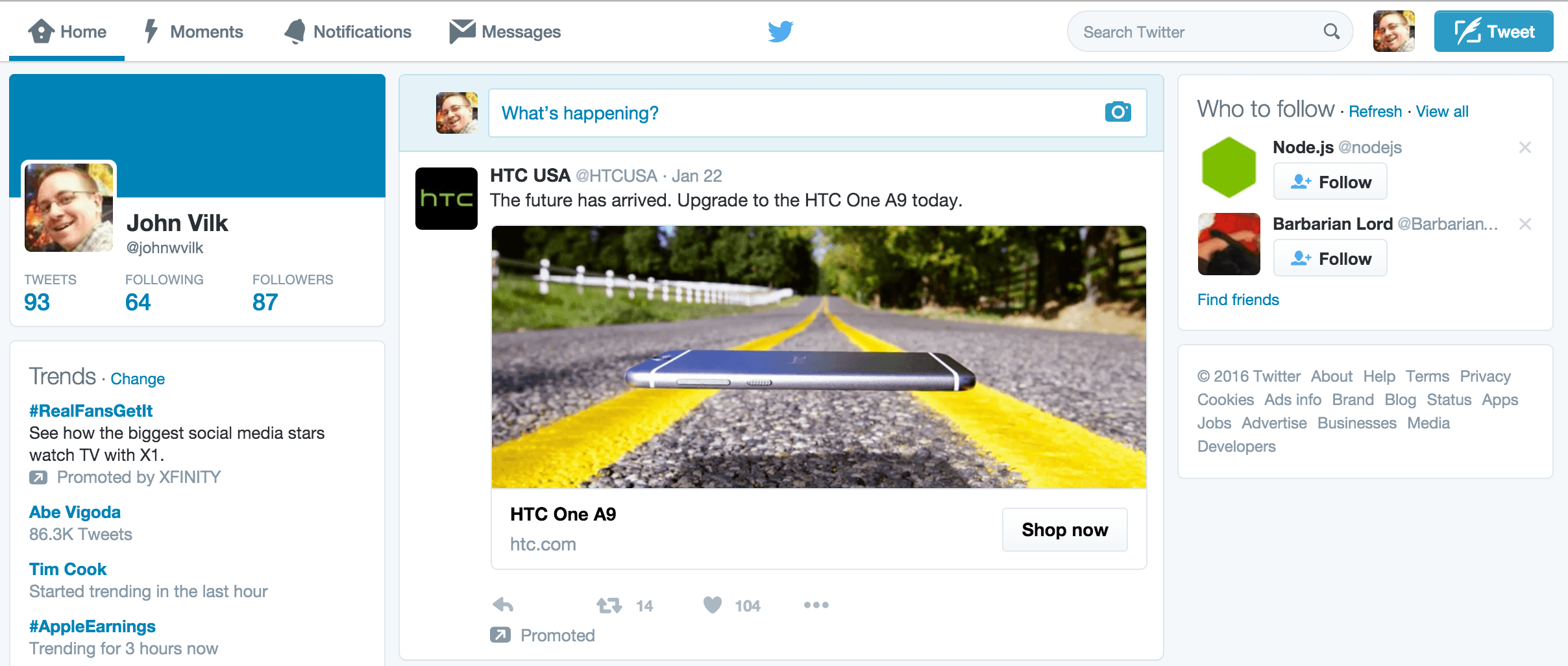
Screen 02: The same Twitter feed with a tweet selected. After the user clicks on the tweet, Twitter unfolded a series of snarky comments about the tweet, and a reply box. Both of these things were not there before:
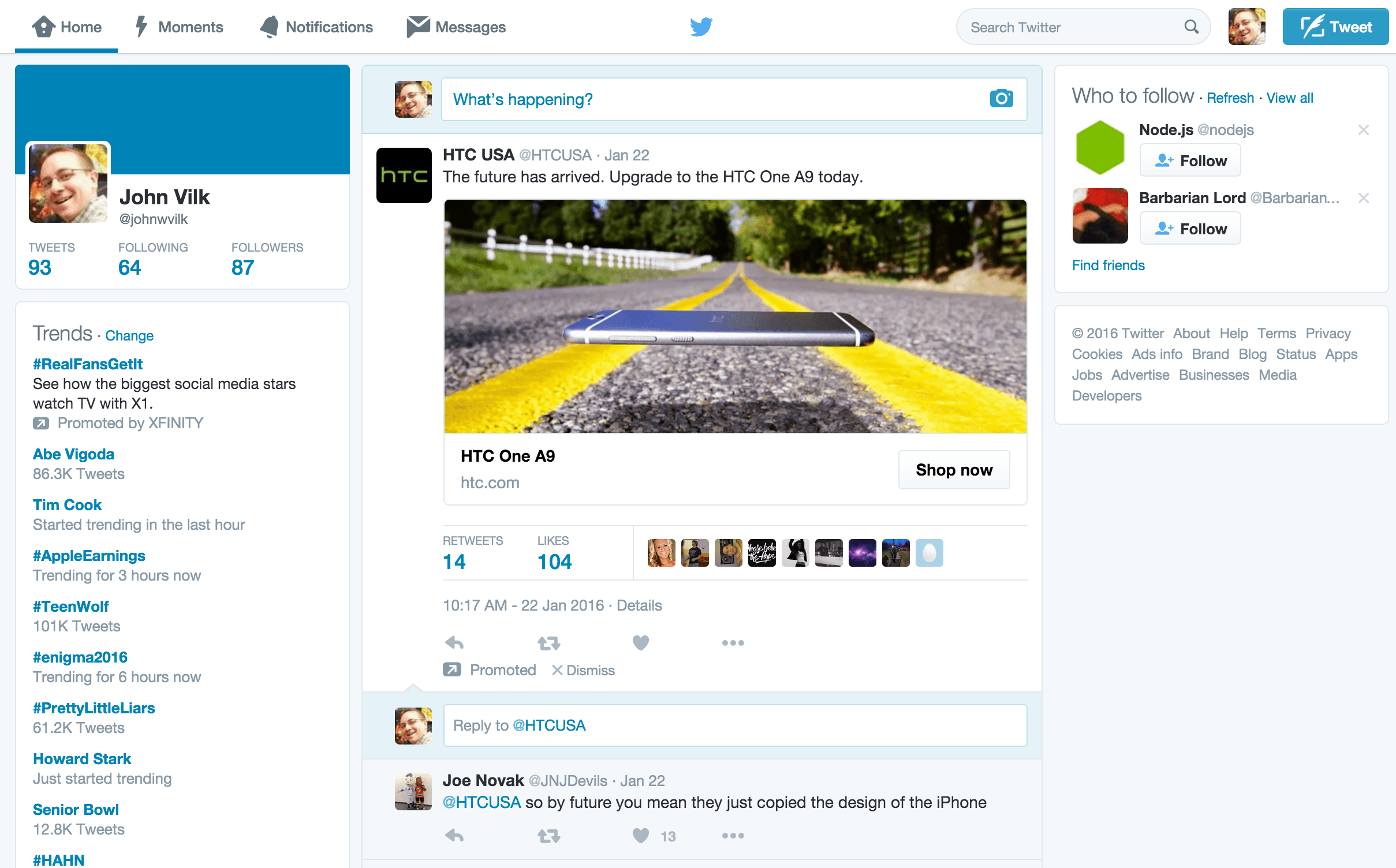
Screen 03: A Twitter view of a single tweet in isolation. If the user shares the URL to the tweet with someone, this is the page they are brought to.
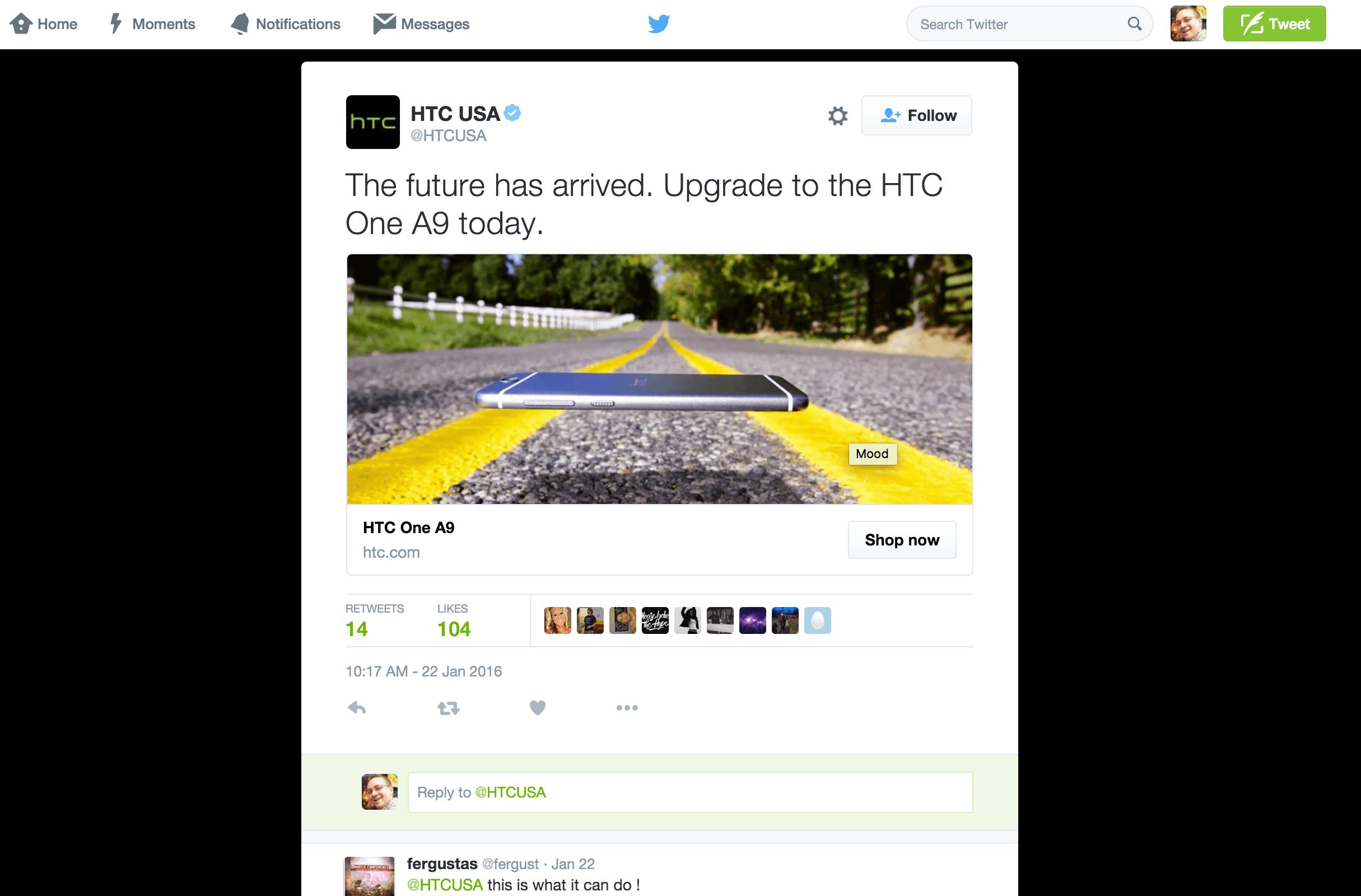
Screen 04: The UCombinator Vice President’s Twitter page. This page contains all of his tweets and retweets.
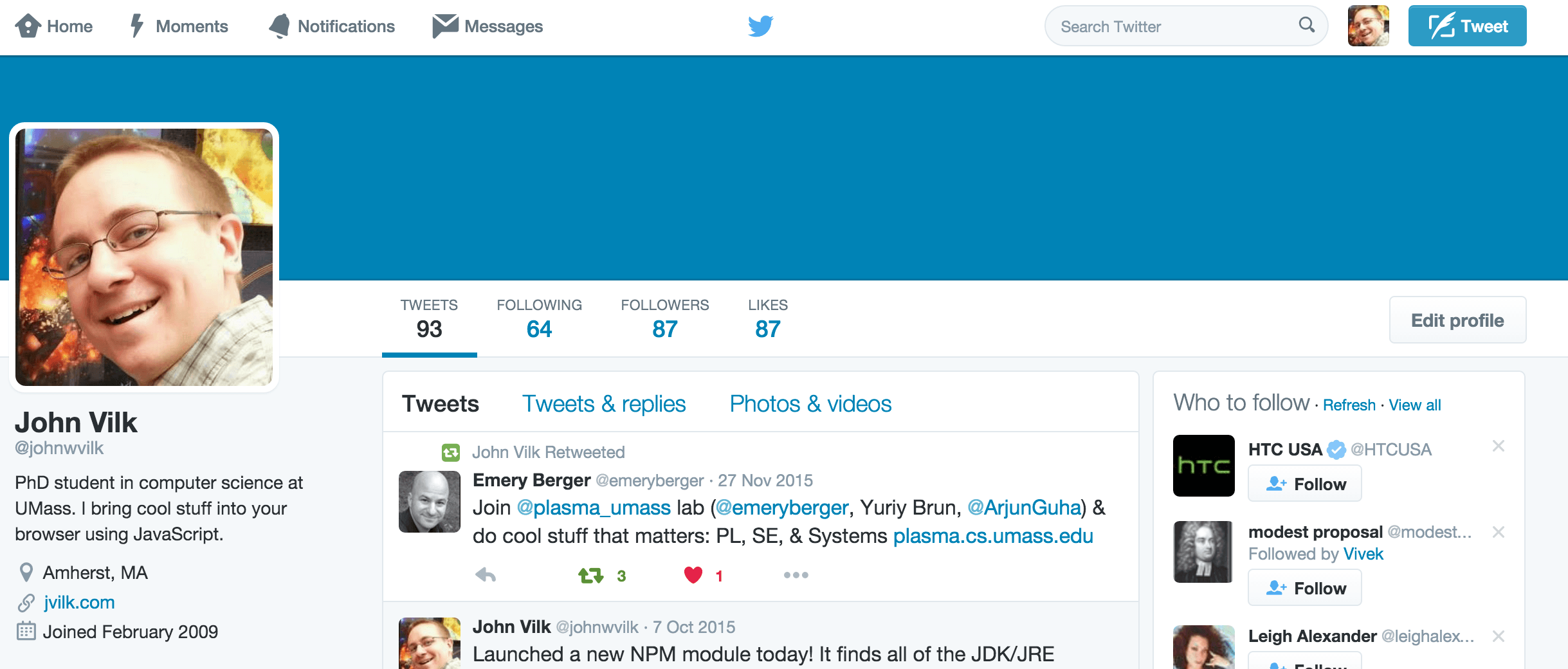
Screen 05: Search results for “cute kittens”. This screen comes up when a user searches for something.
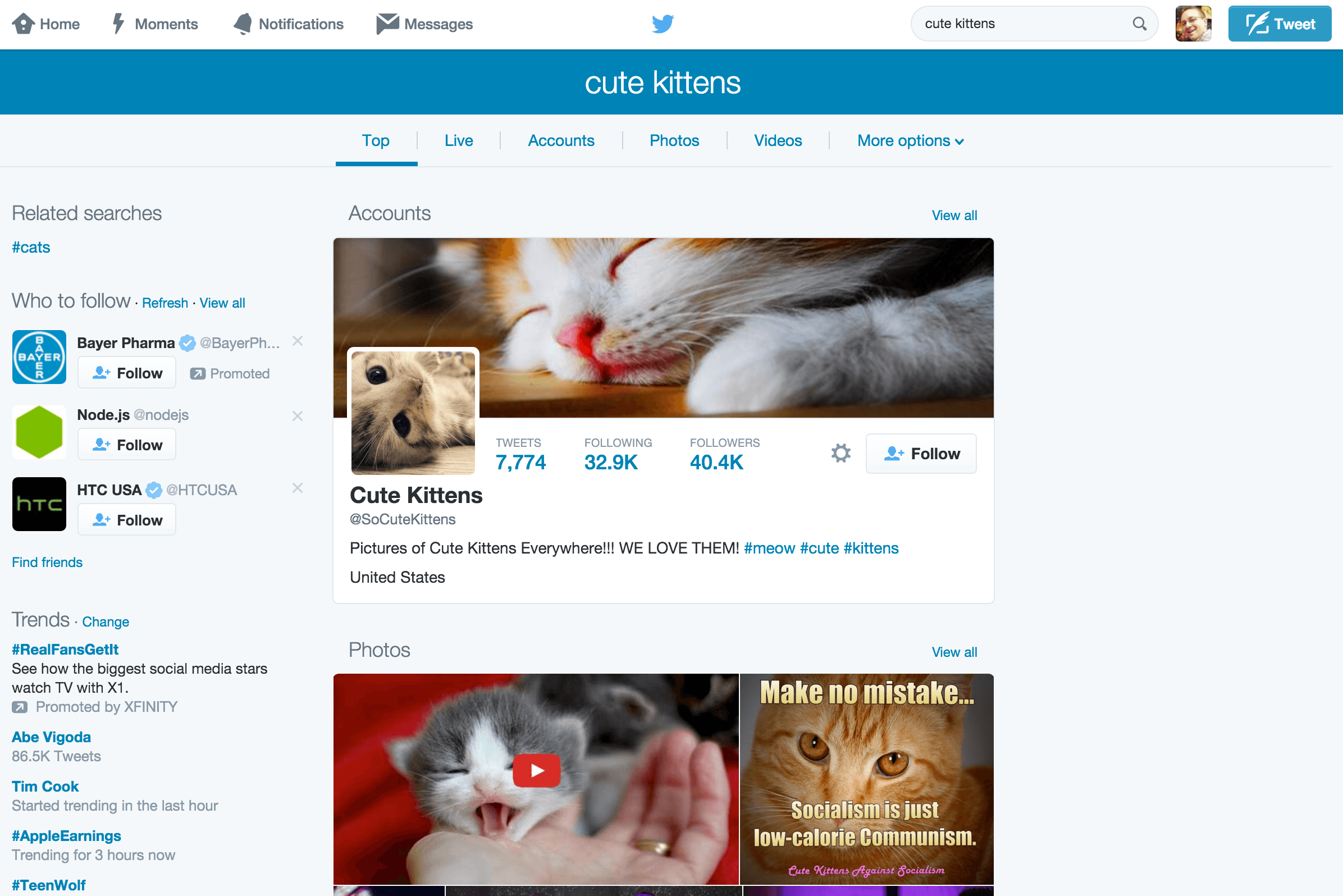
Screen 06: Composing a new tweet. This box comes up when the user hits the “Tweet” button in the upper-right corner.
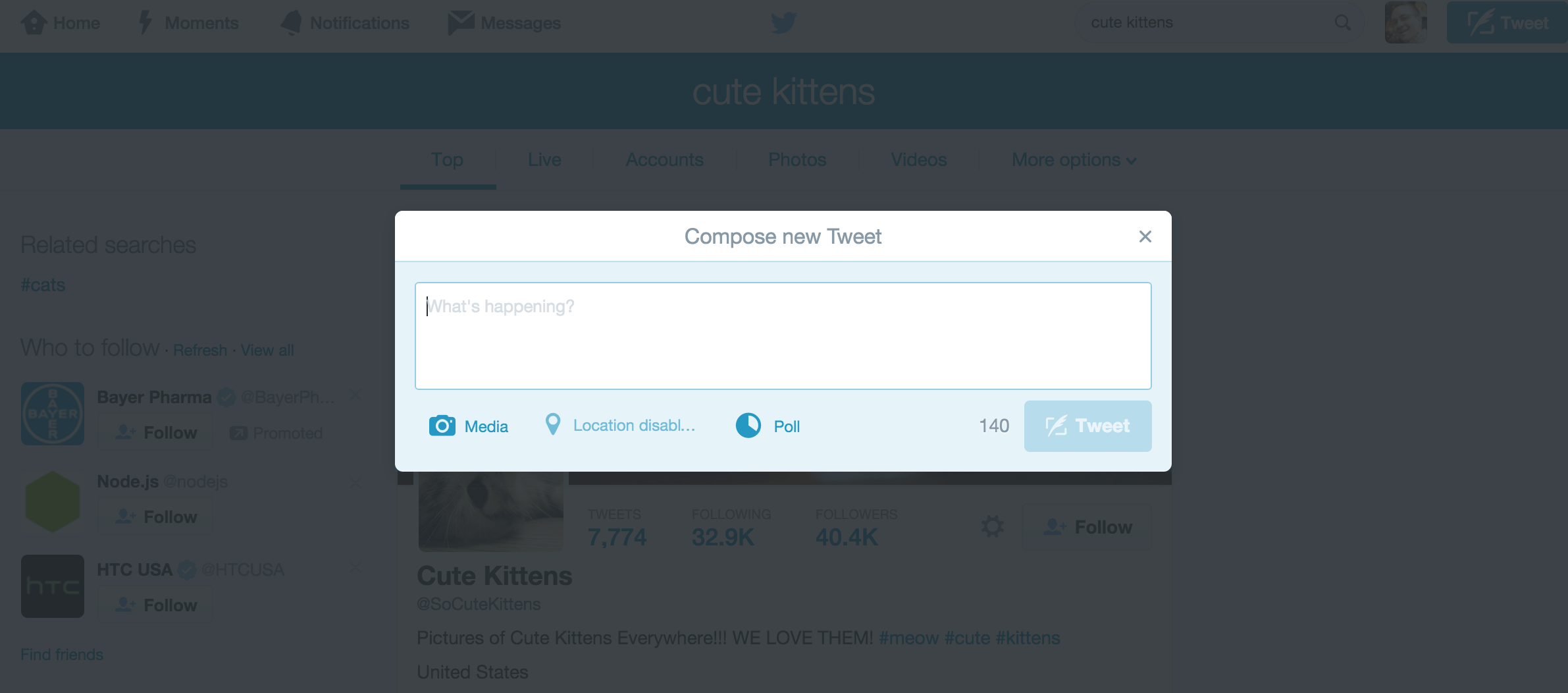
…make sense? Each screen contains new visual widgets that were not there before. Your startup’s screen mockups should give UCombinator a feel for what it’s like to use your product.
Each screen should be in a separate HTML file in the build/
directory of your repository (e.g. build/new_tweet.html,
build/tweet_feed.html, etc). You’re likely going to need to do a
bit of copy + pasting to copy common elements shared between screens.
For your mockups, please make the following assumptions:
- A user is logged in to your service. Your mockups should illustrate what your product looks like to a registered user.
UCombinator will NOT grade:
- Log in/log out/account creation screens. We encourage startups to explore these screens if they have time, but they will go unused until we cover how to securely support user accounts and user logins much later on in the course.
Submission Items & Grading Rubric
UCombinator expects that your startup will submit:
- At least as many screens as you have startup founders. As
mentioned earlier, each screen should be in its own HTML document in
the
build/directory.- As mentioned above, login/logout/account creation screens will not count toward this total, and are not required for this submission.
- This is a minimum number. In practice, you should submit as many screens as needed for your application. UCombinator will be disappointed if an application has 8 large menu buttons that point to different parts of the application, but only 4 are mocked up.
- A written report. The report should be included in your Git
repository as
reports/submission_02.pdf. It should include:- A tour of your UI, with screenshots. Explain what each of the screens is for, and the transitions between screens.
- A description of what each startup founder worked on. We expect
that each startup founder is responsible for the UI of at least
one major widget on the webpage.
- A “widget” is a major HTML element of the application. For Facebook, a status update, the left sidebar, the top navigational bar, and the notifications menu are all “widgets”.
- We are going to check your repository’s Git history to verify that your report is accurate.
- It is not acceptable for a startup founder to just write the report; everyone must “get their hands dirty” with HTML/CSS.
The grading rubric is as follows:
- 30% Written report
- 15% Contains a clear, understandable tour of your product’s UI, using screenshots of your mockups
- 15% Contains a clear explanation of what each startup founder contributed to the submission
- 20% Screens use custom CSS to style Bootstrap components / elements
on the page
- 10% Use a consistent custom color scheme
- There are a bunch of free color scheme generators online that use color theory to generate aesthetically-pleasing themes.
- Don’t use default Bootstrap colors for everything. While it looks nice, UCombinator wants startups to differentiate themselves in the market.
- 10% Appropriately manipulates element margin/padding space to
avoid awkward whitespace between elements
- If there’s weird, unnatural empty space between things, we will question it. There are at least three occasions in Workshop 3 where we have to manipulate these CSS properties to fix spacing issues with Bootstrap.
- 10% Use a consistent custom color scheme
- 20% Includes enough screens to understand how major features of
product will look, and includes at least as many screens as
startup members
- If there’s a search box, but no search results screen, we will be sad.
- 30% [Individually] Created the UI of a major product feature, and accurately portrayed contribution in report
UCombinator reserves the right to scale individual scores further if we perceive that a member is not pulling their weight, or that a member is doing extra work to make up for a lackluster member. However, since everyone in the class seems pretty awesome, UCombinator doubts that it will need to do this.
Before the due date, please verify from a fresh clone of your
repository that your mockups display properly. It is easy to forget
to git add files. We are going to grade what’s in your Git
repository on GitHub, and not what’s on your computer’s hard
drive. Also, if you break the npm run serve command, we will dock
points from your submission.
Honors Students: Feature Mockups
This section only applies to semesters when an honors section is provided
In addition to the group submission, honors students must make a mockup of the UI of their feature. The mockup must consist of at least one screen.
Submission Items & Grading Rubric
- 30% Written report contains a clear, understandable tour of your
feature’s UI, using screenshots of your mockups
- This should be put into a separate section of the group report.
- 40% Includes enough screens to understand what the feature will look like, and how it will behave
- 30% Screens use custom CSS to style Bootstrap components / elements
on the page
- 15% Use a consistent custom color scheme
- 15% Appropriately manipulates element margin/padding space to avoid awkward whitespace between elements
Submission
You must submit a text file containing the URL of your team’s github repository. Only one member of your team needs to submit to Moodle.